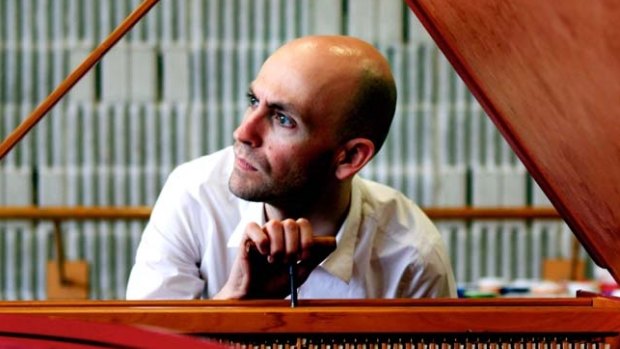By Peter McCallum
Australian Haydn Ensemble
Verbrugghen Hall, December 16
★★★½

Erin Helyard played with 'graceful brilliance'. Credit: Edwina Pickles
Haydn's Farewell Symphony is well known for the story behind its second finale, in which the musicians exit individually leaving only two violins at the end. This was a hint to Haydn's employer Nikolaus Esterhazy, that, much as they liked his flashy palace built on a swamp in Hungary, they would really like to get home to their families.
The Australian Haydn Ensemble updated Haydn's joke to reflect the Arcadian paradise of an Australian summer complete with surfboards and water skies. As guest director and fortepianist Erin Helyard pointed out, the work is more than a musical anecdote and the symphony as a whole is a significant document of the enlightenment.
Haydn scholar James Webster has argued that there is a strong unifying classical structure behind its progression from an unusually stormy first movement in the "remote" key of F sharp minor (symbolising at one level, the "remoteness" of the Esterhazy estate and more generally remoteness from a state of grace) through to its final resolution with just a pair of players in harmony (Skye McIntosh and Matthew Greco, appropriately symbolising the female/male harmony that Haydn was coyly dropping hints about).
Baring the occasional blemish arising from the unpredictability of period instruments, the Australian Haydn Ensemble played with admirable precision of ensemble and attack, shaping each theme without contrived mannerism, undue emphasis or bumptiousness.
The tone of disciplined precision had been established right from the start with J C Bach's Symphony in G minor, Opus 6, number 6 with carefully phrased, insistent expressive ideas in the first movement and a slow movement of portentous solemnity.
The finale was light if slightly less energised. Helyard pointed out that while composing the next work, the Piano Concerto in A, K. 414 in 1781, Mozart had learnt of his friend, J C Bach's death and as well as the oblique references of homage noted by scholars, the slow movement also made oblique references to the dragging theme in the work we had just heard.
The orchestra played with light transparency allowing Helyard's graceful brilliance on the fortepiano to project through the orchestral sound without force. The slow movement contrasted a warm sound from the orchestra with hushed expressive stillness from the soloist.
The program also included Mozart's Rondo for piano and orchestra, K. 386 often assumed to be a discarded finale for K. 414.